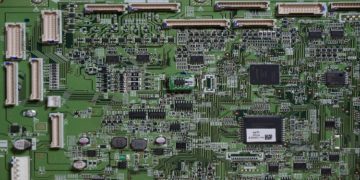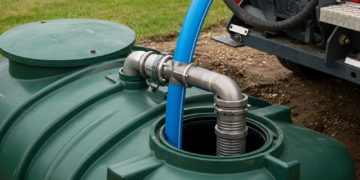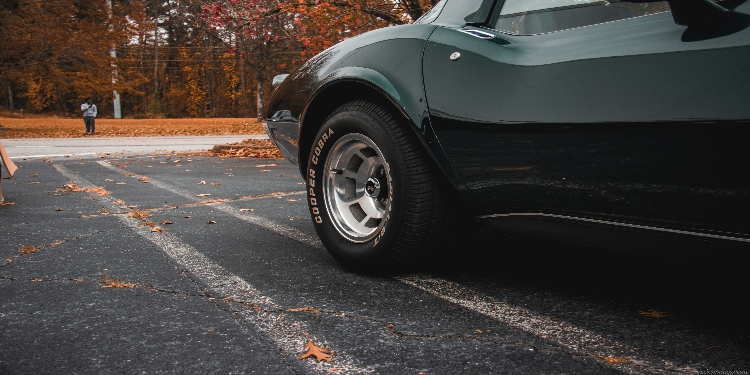A vehicle that has become inoperable due to a malfunction can be towed to a service station or destination. What rules must both drivers follow?
What is towing?
Tow Truck Winnipeg Service with Future Towing is the movement of a disabled vehicle using a cable, a special mechanical device, or a partial loading method. In this situation, the lead vehicle is the towing vehicle, and the disabled vehicle is the towed vehicle. Towing is considered a complex, potentially dangerous process, and Section 20 of the Traffic Regulations is entirely devoted to its implementation. Several provisions are also contained in Sections 7, 10, 19, and 24 of the Traffic Regulations.
Towing rules
Standard traffic regulations apply to both participants in a Winnipeg Tow Truck Service Near Me. Specifically, both the towing vehicle and the vehicle being towed must have state registration plates (numbers), and the drivers of this “tandem” must have documents authorizing them to operate this type of vehicle, as well as compulsory motor vehicle liability insurance policies. According to Section 20.2 (1) of the Traffic Regulations, the driver of the towing vehicle must have at least two years of driving experience. No such restrictions apply to drivers of the vehicle being towed.
Who should turn on the hazard warning lights when towing?
If the hazard warning lights are missing or malfunctioning on the towed vehicle, an emergency triangle must be attached to its rear (Section 7.3 of the Traffic Regulations). The hazard warning lights are not turned on on the towing vehicle, as it must use its turn signals to signal other drivers of the upcoming maneuver.
For violation of towing rules, Part 1 of Article 12.21 of the Code of Administrative Offenses of the Russian Federation provides for a warning or an administrative fine of 500 rubles.
Types of Towing
Towing is carried out using one of three methods, depending on the weight of the disabled vehicle, its design, and the nature of the failure. Electric vehicles with synchronous motors and permanent magnet motors are prohibited from being towed for distances greater than 10–500 m if the wheels of the drive axle(s) are in contact with the road surface, as this could cause the battery to overheat and catch fire. In these cases, a Tow Truck Winnipeg Near Me or partial-load towing with a special dolly on which the wheels of the drive rear axle are mounted is required. In other cases, the following towing methods are used.
The driver must be behind the wheel of the towed vehicle.
Section 20.2 of the Traffic Regulations prohibits the transportation of passengers in buses and trolleybuses towed by flexible couplings, as well as in the back of a truck. There are no such restrictions for passenger cars, but for safety reasons, it is best to transfer passengers (if possible) to the tractor unit.
Towing with a rigid hitch
Rigid towing is the towing of all types of vehicles, except passenger cars and utility vehicles, using a special metal structure, the requirements for which are outlined in GOST 25907-89. This structure allows for the towing of vehicles with a gross vehicle weight of up to 50,000 kg. Section 20.4 of the Traffic Regulations permits the towing of vehicles with inoperative braking systems using a rigid towing system, provided the actual weight of the towed vehicle is less than half the actual weight of the towing vehicle.
According to paragraph 20.1 of the Traffic Regulations, when towing with a rigid hitch:
The driver must be at the wheel of the towed vehicle, except in cases where the design of the rigid coupling ensures that the towed vehicle follows the trajectory of the towing vehicle when moving in a straight line;
The distance between the towing vehicle and the towed vehicle must be no more than 4 m.
Clause 20.2 of the Traffic Regulations prohibits the transportation of people in buses and trolleybuses towed on a rigid coupling, as well as in the back of a truck.
Partial loading towing
Partial-load towing is a method in which one of the axles of the towed vehicle is placed on the platform or in the back of the towing vehicle. According to Section 20.4 of the Traffic Regulations, partial-load towing is permitted for vehicles with inoperative steering and/or braking systems. In the latter case, the actual mass of the towed vehicle must be less than half the actual mass of the towing vehicle.
Clause 20.2 of the Traffic Regulations prohibits the transportation of people in the cabin or body of a vehicle that is being moved using a partial loading method, as well as in the body of a towing vehicle.
Towing a car with an automatic transmission
A vehicle with a classic hydromechanical automatic transmission can be used as a “tractor”, but it must be taken into account that the gearbox is designed to transmit a certain force; therefore, the mass of the towed vehicle should not significantly exceed the mass of the towing vehicle.
Towing a vehicle with this type of transmission is also possible by placing the selector in neutral. However, there are strict distance and speed limits (specific values are specified in the owner’s manual). Transmissions—continuously variable transmissions (CVTs) and dual-clutch automatics. Models with such transmissions (especially CVTs) are also not recommended for towing heavy vehicles due to the significantly increased load on the traction mechanisms, which can lead to accelerated wear or failure. Two-wheel drive models with CVTs are often permitted to be towed by partial loading, including mounting the drive axle wheels on a special dolly. All-wheel drive models with CVTs require a tow truck to move them.
How to tow a manual transmission car
Manual transmissions are generally reliable enough to be used as towing vehicles. Vehicles with manual transmissions can also be towed for significant distances by placing the transmission in neutral.
How to tow a car properly
discuss the route;
agree on the speed of movement;
Put your phones on speakerphone or hands-free mode to coordinate your actions once you start driving; you can also use commands given by the horn or high beams of your headlights.
If a towing eye with a threaded part is used instead of a welded one, it should not be screwed in all the way so that the eye can be easily unscrewed after towing is completed.
Hang some heavy object (there are special covers) on the cable so that if it breaks, its hook (if any) does not damage the cars.
The driver of the towed vehicle must:
turn on the ignition so that the steering wheel does not lock when turning;
Give a signal that you are ready to start moving.
Be prepared for the fact that with the engine off, turning the steering wheel and braking without working boosters will require significant effort.
When driving, keep an offset position relative to the towing vehicle to have a better view.
Be the first to start changing lanes to reduce the risk of not being able to complete the maneuver in time.
keep the rope taut;
When braking, avoid hitting the cable.
The driver of the towing vehicle must:
move off smoothly so that the cable is tensioned without jerking;
overcome climbs without stopping;
turn smoothly over a large radius without cutting corners;
accelerate smoothly to tighten the cable if a drop in load is felt on it;
brake smoothly so that the driver of the towed vehicle can reduce speed in time;
Do not try to rush through a yellow traffic light.
When giving way, make sure that the traffic will be safe for the driver of the towed vehicle.
After finishing towing, move the car back a little to loosen the tension on the cable.














































































